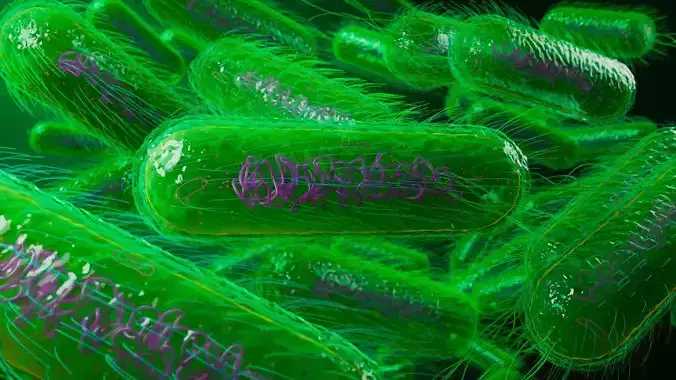1/6
This is a high-quality 3D model of the Escherichia coli bacterium designed for use in scientific visualisations, animations, educational content, and medical illustration.
Features:Exterior Layers
Capsule (Capsula) – A transparent, slimy outermost layer rendered with subsurface scattering and glossiness, giving it a hydrated biofilm look. It provides a realistic barrier surrounding the cell.
Cell Wall (Peptidoglycan Layer) – Subtly visible beneath the capsule as a textured, semi-rigid layer that defines the rod-shaped structure. Modeled with a slight bumpiness to mimic bacterial envelope stiffness.
Plasma Membrane (Cytoplasmic Membrane) – Accurately placed under the wall, creating the realistic triple-layered envelope of Gram-negative bacteria.
Appendages
Fimbriae (Fimbriae) – Dozens of short, thin hair-like structures densely covering the surface. Generated via a hair particle system to simulate their high number (~100–500 per cell).
Pili (Pili / F Pili) – Thicker and slightly longer than fimbriae, placed more sparsely. Their attachment originates from deeper layers, connecting to the inner membrane system.
Flagella (Flagellum) – Long, curved, whip-like filaments (modeled optionally) can be added for motility. These originate from the basal body embedded in the membrane.
Interior Components
Cytoplasm – Semi-transparent inner body with depth and mild SSS effects for realism.
Ribosomes (70S type) – Hundreds of tiny red-orange dots scattered throughout the cytoplasm, generated via volume-based particle system. Represent protein synthesis machinery.
Nucleoid Region – Dense, purple, tangled DNA filament accurately resembling the circular bacterial chromosome, floating in the central cytoplasmic space.
Plasmids – Small, circular strands modeled independently, representing extra-chromosomal DNA.
REVIEWS & COMMENTS
accuracy, and usability.






